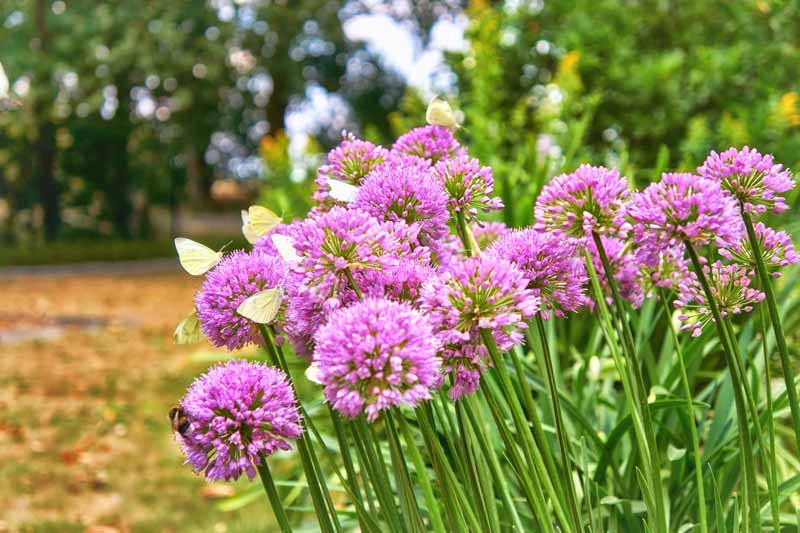Agapanthus Treatment Tips for Lush and Vibrant Flowers
Agapanthus Treatment Tips for Lush and Vibrant Flowers
Blog Article
Mastering the Art of Agapanthus Care: Essential Actions for Healthy And Balanced Development and Dynamic Blossoms
In the realm of gardening, the farming of agapanthus stands as a satisfying undertaking for those who look for to nurture these stylish flowering plants. With their striking flowers and graceful vegetation, agapanthus has caught the focus of gardeners worldwide. However, attaining optimum development and vibrant blossoms requires a nuanced method that encompasses different necessary actions. From choosing the right range to grasping pruning techniques, the trip towards cultivating thriving agapanthus plants is multifaceted and holds the vital to unlocking the complete potential of these agricultural treasures.

Picking the Right Agapanthus Variety

When choosing the right Agapanthus variety for your garden, think about variables such as environment viability, flower shade, and growth behavior. Agapanthus, commonly understood as Lily of the Nile or African lily, comes in a selection of shades varying from shades of blue and purple to white. Pick a flower color that complements your existing garden scheme to develop an unified landscape. In addition, consider the environment in your area to make certain the Agapanthus selection you choose can prosper in your particular problems. Some varieties are more tolerant of chilly temperatures, while others favor warmer climates. Recognizing the growth routine of different Agapanthus ranges is important for appropriate placement within your yard. Some ranges have a clumping growth practice, ideal for boundaries or containers, while others have an even more spreading nature, ideal for ground cover or mass growings. By meticulously evaluating these factors, you can choose the perfect Agapanthus range to improve the charm of your yard.
Ideal Planting Conditions
Considering the ideal ecological demands is essential for successful Agapanthus cultivation. Agapanthus flourishes in well-draining dirt with a slightly acidic to neutral pH level. When growing, choose an area that obtains full sunlight to partial color. In hotter climates, providing some mid-day color can avoid scorching of the fallen leaves. Agapanthus plants are delicate to cool temperatures and must be safeguarded from frost throughout winter season.
To ensure healthy growth and lively blossoms, plant Agapanthus bulbs at a depth of regarding 2-4 inches and area them 8-12 inches apart. Including raw material, such as garden compost, to the dirt can boost water drainage and fertility, promoting robust root advancement. Mulching around the dig this base of the plants helps maintain wetness and reduces weed development. Normal watering is important, specifically throughout the growing season, to maintain the soil continually moist yet not soaked.
Watering and Fertilizing Tips
Keeping appropriate dampness levels and giving vital nutrients are key components in the treatment program for Agapanthus plants. When it comes to watering Agapanthus, it is essential to strike a balance. These plants like constantly moist soil yet are susceptible to root rot if overwatered.
Fertilizing Agapanthus is necessary for promoting healthy development and respected blooms. Apply a balanced fertilizer, such as a 10-10-10 formula, in the early springtime as new development emerges. Repeat this application every 6-8 weeks throughout the expanding period. Prevent excessive fertilization, as it can cause lavish vegetation at the cost of blooms. Always comply with the manufacturer's directions for correct dilution and application techniques. By adhering to these watering and feeding pointers, you can ensure your Agapanthus plants grow and generate vivid, lasting flowers.
Trimming Methods for Agapanthus
Pruning Agapanthus plants at the appropriate times and with proper strategies is crucial for preserving their health and wellness and advertising ideal growth and flowering. The optimal time to prune Agapanthus is in late winter months or early spring prior to brand-new development emerges.
Deadheading invested blossoms can also redirect the plant's power right into creating more blooms instead than setting seeds. If you want to gather seeds for propagation, leave some flowers to completely dry and fully grown on the plant.
Remember to utilize clean, sharp tools to make precise cuts and decrease the danger of presenting illness. Agapanthus. Routine trimming will aid keep your Agapanthus looking healthy and cool while ensuring an abundant screen of gorgeous flowers
Handling Common Bugs and Conditions
After guaranteeing he has a good point appropriate trimming techniques for Agapanthus, it is crucial to attend to common parasites and conditions that can influence the wellness and vitality of these plants. One usual parasite that impacts Agapanthus is the Agapanthus gall midge.
In addition, Agapanthus plants can experience from root rot if they are planted in poorly draining dirt. By being attentive and taking punctual activity versus pests and conditions, you can help your Agapanthus plants thrive and produce vivid blossoms. Agapanthus.

Verdict
Finally, grasping the art of agapanthus treatment includes picking the right variety, offering ideal growing problems, correct watering and fertilizing, ideal pruning strategies, and dealing with typical parasites and conditions. By adhering to these necessary steps, you can make sure healthy growth and vibrant blooms for your agapanthus plants. Remember to regularly monitor and keep click this your plants to advertise their general well-being and durability.
To make sure healthy growth and vibrant blossoms, plant Agapanthus bulbs at a deepness of regarding 2-4 inches and space them 8-12 inches apart. By following these watering and fertilizing suggestions, you can ensure your Agapanthus plants grow and generate dynamic, resilient blossoms.
One typical insect that influences Agapanthus is the Agapanthus gall midge. In addition, Agapanthus plants can endure from origin rot if they are grown in badly draining soil. By adhering to these important steps, you can guarantee healthy growth and vibrant blossoms for your agapanthus plants.
Report this page